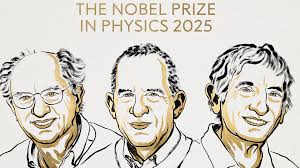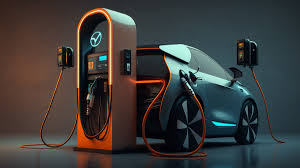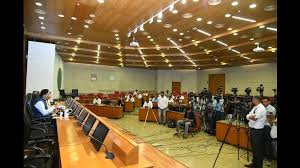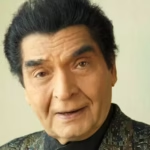Nobel Prize in Physics 2025 Awarded for Breakthroughs in Quantum Tunnelling and Energy Quantisation
The Royal Swedish Academy of Sciences has awarded the 2025 Nobel Prize in Physics to John Clark, Michel H. Devoret and John M. Martinis for their pioneering experiments that demonstrated macroscopic quantum mechanical tunneling and energy quantization in an electrical circuit.
His work broke new ground by showing that phenomena normally confined to the quantum (microscopic) realm can manifest in large-scale systems – bridging a long-standing gap between quantum mechanics and classical physics.
What the award winners discovered
Quantum mechanics allows particles to act in ways that defy classical intuition. Two such phenomena are quantum tunneling – the ability of a particle to cross a barrier that it classically should not cross – and energy quantization – the notion that energy levels are discrete, not continuous.
Until now, these effects were observed mainly on the microscopic scale (single particles, atoms or small clusters). The prizewinners’ main achievement was to engineer a superconducting circuit – built around a Josephson junction (two superconductors separated by a thin insulating barrier) – where the collective behavior of many electrons behaved as an integrated quantum system and demonstrated both tunneling and quantized energy levels.
In particular, in the mid-1980s, Clark, Devoret, and Martinis conducted experiments where a superconducting system switched between zero-voltage and finite-voltage states analogous to quantum tunneling, even when the system was macroscopic enough to handle. They also showed that using microwaves produces individual jumps in energy – behavior similar to quantized levels observed in atoms.
The Nobel committee’s citation emphasises:
The laureates “for the discovery of macroscopic quantum mechanical tunnelling and energy quantisation in an electric circuit”
Who Are the Laureates
- John Clarke is Emeritus Professor at the University of California, Berkeley.
- Michel H. Devoret is affiliated with Yale and UC Santa Barbara.
- John M. Martinis is a professor at UC Santa Barbara and formerly led quantum computing efforts at Google.
In the past, Clarke led the research group that included Devoret (then a postdoc) and Martinis (as a graduate student).
Upon learning of the award, Clarke reportedly said he was “completely stunned,” noting that it had never occurred to him the work might one day earn a Nobel Prize.
Why This Matters
For decades, physicists have grappled with how and where to draw the line between quantum and classical behavior. This award pushes back that limit.
By revealing quantum phenomena in large and controllable systems, this work underpins today’s advances in quantum technologies – from quantum computing to quantum sensors and cryptography.
Because their circuits behave like “artificial atoms,” researchers can use them as building blocks (qubits) in superconducting quantum computers.
Furthermore, the experiments required incredibly precise control to suppress noise and isolate the system from its environment – challenges that are deeply reflected in the ongoing quest to build robust quantum machines.
Many commentators note that while quantum computing often makes headlines, the Nobel Committee has focused on fundamental physics breakthroughs – not immediate applications.
Wider context and legacy
This year’s Nobel follows the tradition of rewarding discoveries in quantum phenomena that previously seemed “esoteric.” Previous Nobel Prizes have celebrated the prediction and early discovery of quantum tunneling in semiconductors and superconductors (for example, Ivar Giaever and Leo Esaki).
What sets the 2025 prize apart is the macroscopic demonstration of quantum effects – showing that entire circuits can behave like quantum objects.
In scientific and engineering circles, it is considered a milestone that closed the conceptual gap between the strangeness of quantum mechanics and the everyday world of electronics and computation.
Conclusion
The 2025 Nobel Prize in Physics honours a profound leap in our understanding of quantum mechanics—one that shows quantum phenomena are not just confined to the microscopic, but can emerge from carefully engineered macroscopic systems.
By demonstrating macroscopic quantum tunnelling and energy quantisation in an electric circuit, Clarke, Devoret, and Martinis crossed a frontier between the quantum and classical worlds. Their work is reshaping how we build technologies that rely on quantum mechanics, from computation to sensing and beyond.
As quantum science moves from theory into practical realms, the recognition by the Nobel committee serves both as validation and inspiration: the strange, counterintuitive laws of the quantum realm are becoming tools we can harness—and in the hands of physicists, devices once seen as “impossible” are becoming real.













